Swaminarayan Sampraday
 From Nwe
From Nwe | Swaminarayan Sampraday | |
| Formation | 1800s |
|---|---|
| Type | Religious |
| Headquarters | Ahmedabad and Vadtal |
| Acharyas | Acharya Maharajshree Koshalendraprasad Pande and Acharya Maharajshree Ajendraprasad Pande |
| Website | http://swaminarayan.info/ |
Swaminarayan Sampraday (Devnagari: स्वामीनारायण सम्प्रदाय, Gujarati: સ્વામિનારાયણ સંપ્રદાય, IAST: Svāmīnārāyaṇa sampradāya), known previously as the Uddhav Sampraday, is a Hindu sect established by Swaminarayan (or Sahajanand Swami) (April 3, 1781 – June 1, 1830). Swaminarayan was handed the leadership of the Uddhav Sampraday in 1802 by his guru Ramanand Swami to continue to propagate the teachings and philosophy of Vishishtadvaita, which originates from the Sri Sampradaya.
Under the leadership of Swaminarayan, the movement gained strength, and at the time of his death it had 1.8 million followers. The organization is based on vedic Hinduism. In addition to its grounding in traditional Hindu scriptures, the sect has more than three thousand works written by Swaminarayan and by members of the sect. The most important are the Shikshapatri and the Vachanamrut (both written by Swaminarayn). The Shikshapatri, a book of social principles, was written by Swaminarayan in 1826. Before Swaminarayan died, he split the administration of the Swaminarayan Sampraday into two gadi (seats) for his two adopted sons: the Nar Narayan Dev Gadi is headquartered in Ahmedabad and the Laxmi Narayan Dev Gadi is headquartered in Vadtal. This was done by means of a legal document, called the Desh Vibhag Lekh.
Followers of the faith, called Satsangis, are expected to follow basic rules set forth by Swaminarayan. Since its inception until now, the sect maintains a large number of ascetics, who contribute to the growth and development of the movement and to the salvation of its members. The ascetics have a special responsibility to care for images in temples. These ascetics wear orange robes and lead a strict life, refraining from worldly pleasures and devoting their lives to the service of the fellowship. The Swaminarayan Sampraday has temples on five continents. The six temples that Swaminarayan built during his lifetime are considered to be the most important within the faith.
As time passed, several splinter and vying organizations, such as the Bochasanwasi Shri Akshar Purushottam Swaminarayan Sanstha and the Swaminarayan Gadi. Each arose from efforts of Swaminarayan Sampraday members following changes in philosophy.
| Part of the series on Hinduism |
|
 |
|
| History · Deities | |
| Denominations · Mythology | |
| Beliefs & practices | |
|---|---|
| Reincarnation · Moksha | |
| Karma · Puja · Maya | |
| Nirvana · Dharma | |
| Yoga · Ayurveda | |
| Yuga · Vegetarianism | |
| Bhakti · Artha | |
| Scriptures | |
| Upanishads · Vedas | |
| Brahmana · Bhagavad Gita | |
| Ramayana · Mahabharata | |
| Purana · Aranyaka | |
| Related topics | |
| Hinduism by country | |
| Leaders · Mandir · | |
| Caste system · Mantra | |
| Glossary · Hindu festivals | |
| Murti | |
Fundamentals
Foundation
The Swaminarayan Sampraday began as the Uddhav Sampraday and was led by Ramanand Swami. In 1799, Swaminarayan, then known as Neelkanth Varni, was initiated into the Uddhav Sampraday as an ascetic (Sadhu) by his guru, Ramanand Swami, and given the name "Sahajanand Swami".[1] At the age of 21, Neelkanth Varni was given the leadership of the sect known as Uddhav Sampraday with the blessings of Ramanand Swami, who handed him control of the religious diocese shortly before his death.[2] Fourteen days after Ramanand Swami died, Neelkanth Varni, now known as Sahajanand Swami, held a large gathering of followers at the town of Faneni. It was during this meeting that Swaminarayan introduced what he termed "the father of all Mantras" and described it as "maha" (or great).[3] Then he was known as Swaminarayan, and the name "Swaminarayan Sampraday" came into existence.
In 1830, at the age of 49, Swaminarayan took Samādhi at Gadhada, promising to remain within the Swaminarayan Sampraday in the images he installed (and in the Acharyas succeeding him), the Acharyas and saints installed by him (and those in direct succession), the saints he initiated (and those initiated by succeeding Acharyas) and in the scriptures, such as Shikshapatri, Vachanamrut, Satsangi Jeevan, Nishkhulanand Kavya, and Yamdand (and those authorized by succeeding Acharyas).
Beliefs
The Swaminarayan Sampraday derives from the Vedas. It follows the Vaishnava form of the Hindu tradition.[4][5] This faith seeks salvation through total devotion (or bhakti) to the God developed through virtues (dharma), spiritual wisdom (gnana) and detachment (vairagya).[6][7][8]
The Swaminarayan Sampraday is devotion-focused and advocates God in the disciplines to attain virtues. Swaminarayan propagated the Vishistadvaita philosophy, which says that God is supreme, has a divine form, is the all-doer and is completely independent.[4][5] According to Vishistadvaita, souls (jiva) never merge or dissolve into God and neither are they part of God, but are always subservient to God. Redemption consists in the realization of ekantik dharma, comprising righteousness, right knowledge, detachment and devotion to that God.[9]
The Swaminarayan Sampraday describes as its purpose the effort to support society, families and individuals by providing uplifting projects for all, irrespective of class, creed, color, and country. Swaminarayan devotees are encouraged or expected to start each day with pooja and meditation, to work or study honestly, and to donate hours consistently in the service of others. Swaminarayan's seeks to establish a permanent system for achieving liberation from the cycle of life and death (aatyantik kalyaan).[10]
Scriptures and important texts
Many scriptures were written by Swaminarayan and his followers, scriptures which are important within the organisation. Of these the Shikshapatri and the Vachanamrut are the most notable. Other important works include the Satsangi Jeevan (Swaminarayan's authorized biography), Muktanand Kavya, Nishkulanand Kavya and Bhakta Chintamani.[11]
In 1826, Swaminarayan wrote the Shikshapatri; the original manuscript is available for viewing at the Oxford Library Sanskrit. This text is revered in the sect.[12] The Shikshapatri' is a book of social laws followed by Swaminarayan's followers. The work is a commentary on the practice and understanding of dharma, a small booklet containing 212 Sanskrit verses that outline the basic tenets of religious views that all Swaminarayan adherents should follow in order to live a well-disciplined and moral life. It is used in the daily morning ritual.[11]
Swaminarayan's philosophical, social and practical teachings are contained in the Vachanamrut, a collection of dialogues recorded by five followers from his spoken words. It is the most commonly used scripture in the Swaminarayan sect, and contains views on moral conduct (dharma), understanding of the nature of the self (jnana), detachment from material pleasure (vairagya), and selfless devotion to God (bhakti) – the four essentials for a soul (jiva) to attain salvation.[7][11]
Temples
Along with scriptures to support redemption and maintain and consolidate the Satsang (holy fellowship), Swaminarayan also constructed stone mandirs, buttressing Upasana for the sake of worshiping God, and offering devotion to the deities. Towards the end of his second decade of work, Swaminarayan placed a greater emphasis on devotion than detachment, vairagya as the way to foster love for God.[13] This emphasis on devotion culminated in the building of mandirs, which served as permanent places of worship, centers for religious gathering, instruction, the study of Sanskrit, devotional music and Vedic literature, and as centers of social services where alms, medicines and clothes were made available to the poor and needy.[14] In a span of six years, from 1822 till 1828, Swaminarayan sanctioned the construction of nine mandirs in Gujarat: Ahmedabad, Mooli, Bhuj, Vadtal, Jetalpur, Dholera, Dholka, Junagadh, and Gadhada.
One of the most prominent features of the heritage of Swaminarayan is its temple architecture. The images in the temples built by Swaminarayan give evidence of the priority of Krishna. All of the temples constructed during his life show some form of Krishna, and all temples since have such venerated figures, or murtis. In the temples of the dioceses of Ahmedabad and Vadtal, these are predominantly at the central altar of the shrine. Human forms are predominant, with the exception of the Hanuman temple at Sarangpur, where Hanuman is the central figure.[15] The temples have accommodation for ascetics built next to them. Stones were quarried in far places and carried to the temple sites.
Swaminarayan temples, like other Hindu temples, have walkways around the central shrine to allow worshipers to circumambulate the shrine, which often is decorated with designs and inlaid marble. The main shrine area is divided by railings. One side of the railing is reserved for women, as Swaminarayan said that men and women should be separated in temples to allow full concentration on God and on worship. Men perform a specified number of prostrations. In front of the men's section, there is normally a small area reserved for ascetics and special guests. There is great variety in the form and nature of the central images, in front of which are gold or silver plated doors that open during darshan.[16] Swaminarayan ordered the construction of the following six mandirs and installed the images of various deities, such as Nara Narayana, Laxminarayan, Radha Krishna, Radha Ramana, Revti Baldevji, himself.[17]
Temples in India
Shri Swaminarayan Mandir, Ahmedabad
Shri Swaminarayan Mandir is the first temple Swaminarayan constructed. It was built in Ahmedabad in 1822, and presents images of Nara Narayana, who occupies the principal seat of the temple, and forms of Arjuna and Krishna at the central altar. The left altar has murtis of Radha Krishna. The land for construction of the temple was gifted by the British Imperial Government. The task of constructing it was entrusted by Swaminarayan to Ananandand Swami. The temple is constructed as per scriptural norms with intricate carving in Burma teak and sculptural art depicting deities' episodes, auspicious symbols and religious icons representing both religion and Indian culture. The temple is believed to be a valuable part of the cultural heritage in the socio-religious history of Gujarat and India. The installation ceremony of the murti forms in the temple was celebrated in the presence of thousands of pilgrims from across India. Nara Narayana .[18][19][20]
Shri Swaminarayan Mandir, Bhuj
On the request of devotees from Bhuj, Swaminarayan asked Vaishnavananand Swami to go there with a team of saints and build a temple. In 1822, they camped on land adjacent to the temple site and drew plans of the temple complex. within a year they had built a temple abode of Nar Narayan.[19][20] The Gujarat Earthquake on 26 January 2001 destroyed much of the city of Bhuj, including this temple. Members of the Swaminarayan Sampraday, including saints and satsangis of Kutch residing in India and abroad, have resolved to construct a new marble temple a short distance from the site.[21] The new temple, the largest in Gujarat, was opened in May 2010 by the then Chief Minister of Gujarat, Narendra Modi.[22]
Shri Swaminarayan Mandir, Vadtal
The temple in Vadtal, also known as Vadtal Swaminarayan, is in the shape of a lotus, with nine domes in the inner temple. The land for this shrine was donated by Joban Pagi, a dacoit who was later converted into a devotee by Swaminarayan. The temple constructed under the supervision of Brahmanand Swami, was completed within fifteen months and idols of Laxmi Narayan were installed by Swaminarayan on November 3, 1824, amidst chants of vedic hymns and devotional fervor of the installation ceremony. Swaminarayan also installed his own murti in Vadtal, naming it Harikrishna Maharaj. The walls are decorated with colorful representations from the Ramayana.[19] The temple's walls are decorated with colorful representations from the Ramayana.[19][20]
Shri Swaminarayan Mandir, Dholera
Dholera is an ancient port-city, 30 kilometers (19 mi) from Dhandhuka in Ahmedabad District. This temple has three domes. Its construction was supervised and planned by Nishkulanand Swami, Bhai Atmanand Swami, Akshardanand Swami and Dharmprasad Swami. The land for the temple was gifted by Darbar Punjabhai. On May 19, 1826, Swaminarayan installed the idols of Madan Mohan and his own form Harikrishna, at the principal seat of the temple and invoked Gods amidst Vedic hymns.[19][20][23]
Shri Swaminarayan Mandir, Junagadh
This temple, in the city of Junagadh on Mount Girnar, has five domes and external decoration with sculptures. Its construction was supervised by Brahmanand Swami; it was built on land gifted by king Hemantsinh of Jinabhai, Darbar of Panchala. On 1 May 1828, Swaminarayan installed the murtis of Ranchhodrai and Trikamrai on the principal altar of the temple, which is 278-foot (85 m) in circumference. The life of Swaminarayan is crafted in stone on the dome of the sanctum.[19][20][24][25]
Shri Swaminarayan Mandir, Gadhada
The land for the temple in Gadhada (or Gadhpur) was donated by the court of Dada Khachar in Gadhada. Darbar Shri Dada Khachar and his family were devotees of Swaminarayan. The temple was made built the courtyard of his own residence. This shrine has two stories and three domes and is adorned with carvings. Swaminarayan assisted in the construction of the temple by lifting stones and mortar, and he installed the figures of Gopinath, Radhika and Harikrishna on October 9, 1828.[19][20][24]
Other temples
Sahajanand Swami also ordered construction of temples at Muli, Dholka and Jetalpur. Although these temples were completed after his death, the Murti pratishtas, idol installation ceremonies, were conducted by Sahajanand Swami. He installed images of various manifestations of God, such as Nar Narayan Dev, Laxmi Narayan Dev, Radha Krishna, Radha Raman and Revti Baldevji. Swaminarayan lived in Gadhpur for about 27 years; he stayed at the Darbar of Dada Khachar, one of his best-known devotees. At some temples, footprints of Swaminarayan are worshiped by his followers.[26] Swaminarayan entrusted the day-to-day performance of the worship rituals in these mandirs to ascetics.[27] By 2012, there were over a thousand Swaminarayan temples across five continents.
Overseas
In the 1920s, members of the sect began to move out of India to East Africa in search of work and better lives. Among these was a large number of Kutchis, who remained loyal to the Bhuj temple under the Nar Nararayan Dev Gadi.[28] All the temples built in Africa come under the temple in Bhuj. The first Swaminarayan temple in Africa was built in Nairobi in 1945,[29] and temples were built in Mombasa and other Kenyan towns in the following years. Temples were also built in Tanzania and Uganda.[30] The Swaminarayan temple in Karachi, Pakistan, was built in 1868 when Karachi was part of the Indian Union.[31]
After the Second World War, members of the movement in East Africa began migrating to the United Kingdom; the number of migrants rose significantly in the 1960s and 1970s.[32] The first Swaminarayan temple in the UK was built in Bolton in 1973.[33] The was followed by a temple in the London suburb of Willesden, which was consecrated in 1975 and is the sect's biggest temple in the UK.Temples have been built in other parts of the UK, such as Cardiff, Oldham, Leicester and Brighton and several others in London. The temple in Leicester was opened in 1993 and was the first in Europe under the International Swaminarayan Satsang Organisation (ISSO) and was followed by one in Sweden.[34][35]
A small number of followers migrated to the United States before 1965 as students, and following a 1965 immigration law, a large number of Indians, including members of the sect. moved there from the 1970s until 2000.[32] The ISSO was formed in 1978 in Chicago under the Nar Narayan Dev Gadi. The temple in Weehawken, New Jersey, was opened in 1987, and was the first in the US.[36] By 2012, the organisation had 20 temples in the US, in cities including Boston, Houston, Chicago, Los Angeles, Tampa, Florida, Detroit and Cleveland, Ohio, Colonia, Parsippany and Cherry Hill.[37] Another organization, ISSM (ISSM), under the Laxmi Narayan Dev Gadi, has temples in Chicago, Grand Prairie, Texas, Sunnyvale, California, Downey and Somerset, New Jersey.[38] Also under the Laxmi Narayan Dev Gadi, the Laxminarayan Dev Spiritual Organisation (LDSO) has been set up in San Francisco to promote the faith there.
The movement also has temples in Australia, Seychelles, Canada, Thailand, Fiji, Mauritius, New Zealand, Oman, UAE and Zambia.[31][39]
Organizational structure
In 1826 at Vadtal, Swaminarayan established the dual Acharyaship in Dharmavanshi Acharyas, whom he intended as his successor. "Dharmavanshi" means "belonging to the lineage of Dharmadev" – the father of Swaminarayan.[40][41] Swaminarayan enthroned his two adopted sons, Acharya Maharajshree Ayodhyaprasad Pande and Acharya Maharajshree Raghuvir Pande, who were the sons of his brothers Rampratapji and Ichcharamji, as the spiritual leaders of the Nar Narayan Dev Gadi headquartered at Ahmedabad and the Laxmi Narayan Dev Gadi headquartered at Vadtal respectively. He installed them as the Acharyas for all followers, including householders and ascetics.
Swaminarayan gave sole authority to these two individuals to install murtis in temples and to initiate sadhus and householders into the Sampraday.[42] He did this using a legal document known as "Desh Vibhag no Lekh," which he dictated and was written by Shukanand Swami. Learned saints and elder satsangis witnessed this document. Copies were presented to the inaugural Acharyas, Acharya Maharajshree Ayodhyaprasad Pande and Acharya Maharajshree Raghuvir Pande – these are currently in the possession of the current Acharyas. The document was accepted by the Bombay High Court as the authoritative document regarding the apportionment of the two dioceses, so it has legal standing.[40] [43]
Importance of Acharyas
Swaminarayan thought that as he had established the temples and the Swaminarayan Sampraday, he wanted to keep his sadhus free from the affairs dealing with wealth, power and other worldly affairs. He decided to create leaders who would subsequently be responsible for the Swaminarayan Sampraday. This led to his decision to appoint his nephews as Acharyas. The constitution of the Sampraday is laid out in Desh Vibhag Lekh which describes in detail the functions of the Acharyas.
... it is my command to all sadhus, bhamcharis and all satsangies, that for the purpose of your kalyaan (emancipation) you must obey and follow the two Acharyas of Dharmavansh, and obey their commands by thought, action and speech. If this is compromised and whoever turns elsewhere (rejecting the Acharyas) will find that they will never find sukh (happiness) in this world or the worlds beyond and will experience immense distress ... ― Desh Vibhag Lekh
The Acharyas of the Sampraday are administrative heads, spiritual leaders and the gurus of their followers. Since the acharyas are supposed to refrain from contact with the opposite sex, except close relations, the acharyas' wives are the gurus for female members of the sect, and must avoid contact with unfamiliar men. The acharyas wear a red turban, and carry a golden staff and umbrella, the symbols of their authority [44]
The Acharyas are responsible for:
- Initiating followers into the organisation with a Samanya Diksha by giving the guru-mantra [45]
- Initiating monks-sadhus by giving them the Maha-Bhagwadi Diksha[46]
- Perform murti-pratishtha, installing deities in the temples[47]
- Authenticating scriptures of the Sampraday[48]
- Acting as the Guru and leader of the entire Sampraday[48][49]
These responsibilities are prescribed in the holy texts Shikshapatri, Satsangi Jeevan and Desh Vibhag Lekh, according to which no person other than the Dharmavanshi Acharyas may carry out these duties.[50]
In one of the most authoritative scriptures, the Vachanamrut, Swaminarayan states one of the prerequisites for attaining Akshardham. He wrote, "The devotee who is aashrit of Dharmakul (i.e. he who has received initiation from Dharmavanshi Acharya and remains loyal to the Acharya) gets a divine Bhram-state body by God's wish." [13] It is seen as imperative to be a humble, loyal follower of the Dharmavanshi Acharya once receiving the diksha (guru mantra) in order to achieve a bhram form.
Organizations within Swaminarayan Sampraday
In 1978, the Acharya of the Ahmedabad gadi, Acharya Shree Tejendraprasadji Maharaj, founded the International Swaminarayan Satsang Organisation (ISSO) in the United States on the occasion of Vijaya Dasami. The prime objective of ISSO is, "To advance the Sanatan Dharma, in accordance with the principles and teachings of the Swaminarayan Sampraday, founded and ordained by Sahajanand Swami," enabling Swaminarayan's devotees from both the Nar Narayan Dev Gadi (Ahmedabad) and Laxmi Narayan Dev Gadi (Vadtal) to practice their religious duties in harmony.[51]
In 2001, ISSO-Seva, an independently run charity under the Swaminarayan Sampraday was established to help mankind, the homeless and needy and promote awareness about modern day diseases and infections. It provides relief after natural disasters worldwide. The charity is run by professionals and volunteers of the Swaminarayan temples and centres.[52]
Narnarayan Dev Yuvak Mandal (NNDYM) is a youth organization which was founded by Acharya Shree Koshalendraprasadji Maharaj in his Acharya status in 1994. Its headquarters are at the Shri Swaminarayan Mandir in Ahmedabad; it was created to help young people to confront the challenges of human life. This organisation has various initiatives to build a foundation of young people across the globe. It propagates duty, devotion, knowledge (gnaan) and detachment from illusion (maya).[53]
LaxmiNarayan Dev Spiritual Organisation is based in the San Francisco Bay area; this organization was formed at the behest of Acharya Maharajshree Ajendraprasadji Pande to perform Satsang in the area.[54]
The International Swaminarayan Satsang Mandal (ISSM) is an organization based in United States that comes under the Laxminarayan Dev Gadi, Vadtal.[55] It has several temples in the US, all of which are named Vadtal Dham after the parent organization.[38]
Membership
According to biographer Raymond Williams, when Swaminarayan died in 1830, the movement had a following of 1.8 million people. In 2001, the original movement had 3.5 million of a total of 5 million followers of the Swaminarayan faith. It was more wealthy, had more followers, both householders and saints, and supported more large temples than the other Swaminarayan groups.[56][57]
A member of the Swaminarayan Sampraday is known as a "Satsangi." Male satsangis are initiated by the acharya of the gadi he comes under. Female satsangis are initiated by the wife of the acharya, who is the leader of women in the Swaminarayan Sampraday. In the absence of the acharya, ascetics perform this initiation, which is then confirmed by the acharya on his next visit.[46] The ceremony involves the taking of five vows (panch vartaman): not to commit adultery or robbery, not to consume intoxicants or meat and not to lie. The initiator then pours water over the initiates hands, gives him a Sanskrit shloka, Shri Krishna twam gatirmama, meaning Shri Krishna thou art my refuge. The initiate then offers at least half a rupee to the acharya, who adorns a kanthi thread around the initiate's neck. The initiate is then required to apply the tilak chandlo to his forehead (chandan U and red kum kum dot in the middle).[45] Ladies only apply the red kum kum dot. Though the organisation is part of the Hindu faith, a satsangi need not necessarily be a Hindu. Some adherents of other religions, such as Islam and Zorastarianism are members of this movement as well.[58]
There are eight important things in the life of a Satsangi; these are Kanthi – a thread worn around the neck,[4] the Tilak Chandlo – a holy mark,[4] the Mala – a thread with 108 beads,[46][59] Nitya Pooja – daily prayers, the Temple, Darshan – a form of worship, Aarti – a ceremony, and Vandu Pad and Chesta Pad – verses recited in the temples daily.[4] A Satsangi must show reverence for God, the Shastras, the Acharya of the Gadi the Satsangi comes under (NarNarayan Dev Gadi or LaxmiNarayan Dev Gadi), festivals, elders and be of overall good conduct. [60]
Upon initiation, Satsangi make 11 vows, called Niyams (Rules):[61]
- Be non-violent
- Do not have any kind of relationship with a woman other than your wife
- Do not eat meat, including seafood, poultry products or eggs
- Do not drink products that contain alcohol, including medicines
- Never touch a widow woman whom you do not know
- Never commit suicide in any circumstances
- Do not steal
- Never blame others for something that you may not know about
- Never disparage God, Goddesses, or any religion
- Never eat someone's food who does not follow these eleven rules
- Never listen to holy stories from an atheist.
Ascetics
From the beginning, ascetics have played a major role in the Swaminarayan Sampraday. They contribute towards growth and development of the movement and towards the salvation of its members.[27] Sadhus, initiated by either Dharmavanshi Acharya, also form an integral part of the organisation and wear only orange robes. The Brahmachari ascetics, who are Brahmins, have a special responsibility of taking care of images in temples. These ascetics wear white robes on their waist and an orange cloth over their shoulder. Ascetics lead a strict life, refraining from worldly pleasures and devoting their lives to the service of the holy fellowship. They preach the philosophy and life of Swaminarayan and encourage people to follow a pious and religious life.[27] Swaminarayan has stated in the Vachanamrut that the association of Satpurush (true saints/devotees) opens the path to salvation. In 1999, the Ahmedabad Gadi had 765 male ascetics and the Vadtal Gadi 1468 male ascetics.[62]
The first rule of becoming an ascetic (sanyansi) of the sect is never to come in contact with the opposite sex, or money.[63] Ascetics are not allowed to leave the temple alone; they have to move out in pairs. Even in the temple, while using the toilet, they must do so in pairs to ensure they keep their vows. The food they eat must be mixed up so that they may not seek the particular taste of any one part.[64]
Female ascetics, known as Samkhya yoginis, receive initiation from the Gadiwala, or wife of the Acharya. They stay within the temple, follow ascetic rules strictly, wear dark red clothing and stay in the temple Haveli. They take care of the images in women's temples and conduct discourses for women. In 1999, the Ahmedabad Gadi had 440 female ascetics and the Vadtal Gadi had 115 female ascetics.[65]
The panch vartman, or the five principal vows, are prerequisites for being considered as part of the Sampraday for Sadhus.
- Lustless, Desireless:- Observe Naishthik Brahmacharya i.e. eightfold celibacy strictly. He has to observe a fast if he has seen a face of a lady. Not to expect any remuneration even of his good deeds or must not have any desire of anything.
- Greedless:- Not be attached at all to the worldly objects. He should keep clothes and things only permitted to him. He should not accept, touch or possess even any sort of currency of his own.
- Tasteless:- Not be allured or tempted at all to any taste. Not to eat anything which is not offered to God.
- Prideless:- Not have any sort of pride of renouncement, penance, knowledge, efficiency religious austerity, devotion, etc. If anybody beats him, abuses him or insults him, he should endure patiently, not to be angry at all, should forgive, not to oppose, not to keep any grudge or any ill feelings for him, but to wish good for him and to pity for his ignorance.
- Affectionless:- Not have any affection at all towards his body, his relatives, his disciples or anything except Almighty God Supreme.
Swaminarayan Paramhansas
Tradition maintains that Swaminarayan initiated 500 ascetics as paramhansas in a single night. Paramahansa is a title of honor sometimes applied to Hindu spiritual teachers who are regarded as having attained enlightenment. Paramhansas were the highest order of sannyasi in the sect. These paramhansas practiced strict restraint and spread the message of purity to many people.[66] Notable Swaminarayan Paramhansas include:
- Muktanand Swami was initiated by Ramanand Swami, Muktanand Swami was instrumental in Swaminarayan's entry into the Uddhav Sampraday. He wrote the Swaminarayan Aarti and literary works such as Muktanand Kavya, and co-wrote co-authored the Vachanamrut.[67] Swaminarayan sometimes called Muktanand Swami the "Mother of Satsang".[64][68]
- Gopalanand Swami was considered the chief disciple by Vadtal.[69] He was very learned in Ashtanga Vinyasa Yoga, and after the death of Swaminarayan, the responsibility of the Swaminarayan Sampraday and the acharyas were left in the hands of Gopalanand Swami. Swaminarayan held Gopalanand Swami in very high regard.[70] Gopalanand Swami arranged for the image of Hanuman to be installed in the Sarangpur temple[64][71] and co-authored the Vachanamrut.[67]
- Gunatitanand Swami was the mahant of the Junagadh Temple. He contributed spreading the Swaminarayan Sampraday in that region for over 40 years.[72] His works are compiled in the book Swamini Vato.[73]
- Brahmanand Swami was a notable poet who wrote almost a thousand poems and co-wrote the Vachanamrut.[67] His works are compiled in the Brahmanand Kavya, a copy of which is preserved in the British Museum in London.[74] He was also distinguished in architecture – as evident in the temple buildings in Muli, Vadtal and Junagadh.[64][73]
- Premanand Swami was a poet and a singer.[73] He compiled the Chesta Pad and Vandu Pad among other works. The Chesta Pad is recited daily at all Swaminarayan temples, describes Swaminarayan's daily routine and habits. Vandu Pad describes the features and appearance of Swaminarayan.[64]
- Nishkulanand Swami wrote the Bhakta Chintamani, which describes the life of Swaminarayan, his activities, sermons, theories and obstacles faced by him. He also wrote 22 other scriptural works on various subjects, such as Purshottam Prakash and Yamdanda, and poems which are complied in Nishkulanand Kavya.[68][73][75]
- Nityanand Swami wrote several important works, such as the Hari Digvijay and the Shri Hanuman Kavach, produced the first Gujarati translation of the Shikshapatri which was approved by Swaminarayan, and co-authored the Vachanamrut.[67][76]
Breakaway groups and disputes
Decades after Swaminarayan's death, several people claiming differences in philosophy left the original movement and established their own groups. Swaminarayan Gadi is a prominent one.
In 1906, the original movement suffered its greatest schism when a prominent ascetic named Shastri Yagnapurushdas left the Vadtal Gadi to form his own institution, Bochasan Swaminarayan Sanstha, claiming Gunatitanand Swami was the rightful successor to Swaminarayan.[6] He was legally excommunicated from the Vadtal Gadi.[77] The organization he formed is now known as Bochasanwasi Shri Akshar Purushottam Swaminarayan Sanstha, or BAPS.
Muktajivandas Swami left the Ahmedabad Gadi to form the Swaminarayan Maninagar Gadi Sansthan in the 1940s, claiming Gopalanand Swami was the spiritual successor to Swaminarayan.[78]
Within the tradition, there have been territorial disputes over the Vadtal temple and other assets. The conflict between the Dev faction, led by ascetics, that maintains that the temple is nobody’s ancestral property and the Acharya faction, led by the former acharya of Vadtal, has seen some tensions in recent years. In May 2001, the conflict escalated when the schismatic faction brought in Acharya Maharajshree Tejendraprasad Pande from Ahmedabad for a diksa ceremony instead of Acharya Maharajshree Ajendraprasad Pande, the then acharya at Vadtal. The Government of India intervened by setting up an arbitration panel in June 2001. A settlement was brokered by a panel between the two factions in June 2002, but the Dev faction led by Nautam Swami (mahant of the Vadtal temple) refused to cooperate, leading to an intensification of the dispute. A number of sadhus of this faction were subsequently exposed in a sex scandal only three months after another five sadhus were sentenced to death for murdering their guru in the Vadtal branch.[79][80]
Recent developments
Swaminarayan Museum
Swaminarayan Museum in Ahmedabad, which houses more than 5000 artefacts, was opened in March 2011.[81] The museum holds items such as Swaminarayan's writing scripts, day to day garments and ornaments. This is the first project in the Swaminarayan Sampraday that aims to acquire all of Swaminarayan's Prasadi items from temples across the world. This museum is a dream of the retired acharya of Ahmedabad, Acharya Maharajshree Tejendraprasad Pande.[82][83]
Technology
The official website of the Swaminarayan Sampraday uses technology to broadcast live darshan on the internet. Temples in Chicago, Colonia in New Jersey, Los Angeles, and Boston, the first temple in Ahmedabad and Shree Swaminarayan Temple in Bhuj broadcast darshan live on the internet each day. Daily darshan can also viewed from many temples worldwide. Important events, such as the 25th anniversary of the Cardiff temple, have also been webcast live on the internet.[84]
Notes
- ↑ Raymond Brady Williams, An Introduction to Swaminarayan Hinduism (Cambridge University Press, 2001, ISBN 978-0521654227), 75.
- ↑ Williams (2001), 17.
- ↑ FAQS Shree Kutch Satsang Swaminarayan Temple Harrow. Retrieved August 13, 2013.
- ↑ 4.0 4.1 4.2 4.3 4.4 Chitkara (1997), 229.
- ↑ 5.0 5.1 Williams (2004), 81.
- ↑ 6.0 6.1 Christopher John Fuller, The Camphor Flame (Princeton University Press, 2004, ISBN 978-0691120485).
- ↑ 7.0 7.1 K. Ayyappapanicker, Medieval Indian Literature: Surveys and selections (Sahitya Akademi, 1997, ISBN 978-8126003655), 131.
- ↑ Carl Olson, The Many Colors of Hinduism: A Thematic-Historical Introduction (Rutgers University Press, 2007, ISBN 978-0813540689), 336.
- ↑ Sahajsananda, Shree Swaminarayan's Vachanamritam (Bharatiya Vidya Bhavan, 1977), 131.
- ↑ Ramesh M. Dave, Sahajanand Charitra (Bochasanvasi Shri Aksharpurushottam Sanstha, 1978).
- ↑ 11.0 11.1 11.2 Williams (2001), 187–190.
- ↑ M.G. Chitkara, Hindutva (APH Pub. Corp, 1997, ISBN 978-8170247982), 227–228.
- ↑ 13.0 13.1 Swaminarayan Sanstha, The Vachanamrut: Spiritual Discourses Of Bhagwan Swaminarayan (Swaminatrayan Aksharpith, 2003, ISBN 978-8175261907).
- ↑ Williams (2001), 23-24.
- ↑ Williams (2001), 96.
- ↑ Williams (2001), 128, 129.
- ↑ Raymond Brady Williams, Williams On South Asian Religions And Immigration: Collected Works (Ashgate Pub. Ltd, 2004, ISBN 978-0754638568), 81.
- ↑ The foundations of devotion Asia Africa Intelligence Wire, from The Times of India, March 4, 2003. Retrieved August 13, 2013.
- ↑ 19.0 19.1 19.2 19.3 19.4 19.5 19.6 Williams (2001), 29.
- ↑ 20.0 20.1 20.2 20.3 20.4 20.5 Swaminarayan Temples. Retrieved August 13, 2013.
- ↑ To Rebuild Kutch Hinduism Today, July/August 2001. Retrieved August 13, 2013.
- ↑ Modi opens Bhuj Narnarayandev Mandir Desh Gujarat, May 18, 2010. Retrieved August 13, 2013.
- ↑ Jay Thakkar, Naqsh – the Art of Wood Carving of Traditional Houses of Gujarat (Research Cell School of Interior Design, 2004, ISBN 978-8175252851), 22.
- ↑ 24.0 24.1 Manohar Sajnani, Encyclopaedia of Tourism Resources in India (Kalpaz Publications, 2001, ISBN 978-8178350141), 110, 126.
- ↑ Anjali Desai, India Guide Gujarat (India Guide Publications, 2007, ISBN 978-0978951702), 280.
- ↑ Williams (2001), 118.
- ↑ 27.0 27.1 27.2 Williams (2001), 107.
- ↑ Williams (2001), 203, 204.
- ↑ Williams (2001), 206.
- ↑ Williams (2001), 207, 208.
- ↑ 31.0 31.1 Men in Saffron on goodwill tour of Pak The Times of India, March 30, 2004. Retrieved August 13, 2013.
- ↑ 32.0 32.1 Williams (2001), 200.
- ↑ About us Shree Kutch Satsang Swaminarayan Temple Bolton. Retrieved August 13, 2013.
- ↑ Williams (2001), 222.
- ↑ Peggy Levitt, God Needs no Passport (New Press, 2007, ISBN 978-1595581693), 223.
- ↑ Williams (2001), 228.
- ↑ Cullen Thomas, Local Hindu temple offers peace Hudson Reporter, February 22, 2009. Retrieved August 13, 2013.
- ↑ 38.0 38.1 Williams (2001), 229.
- ↑ Swaminarayan sects branch out as NRGs seek roots Asia Africa Intelligence Wire, from The Times of India, September 5, 2004. Retrieved August 13, 2013.
- ↑ 40.0 40.1 Williams (2001), 35, 36.
- ↑ Devotees throng Dharmakul fest Daily News and Analysis, June 2, 2009. Retrieved August 13, 2013.
- ↑ Chitkara (1997), 228.
- ↑ Acharyas Shree Swaminarayan Sampraday. Retrieved August 13, 2013.
- ↑ Williams (2001), 40, 41.
- ↑ 45.0 45.1 Chitkara (1997), 230.
- ↑ 46.0 46.1 46.2 Williams (2004), 83.
- ↑ Williams (2004), 82.
- ↑ 48.0 48.1 Williams (2001), 36.
- ↑ Williams (2004), 84.
- ↑ Chitkara (1997), 228, 230.
- ↑ International Swaminarayan Satsang Organisation. Retrieved August 13, 2013.
- ↑ ISSO Seva. Retrieved August 13, 2013.
- ↑ Narnarayan Dev Yuvak Mandal. Retrieved August 13, 2013.
- ↑ Original Swaminarayan Organisation Vadtal – SFO. Retrieved August 13, 2013.
- ↑ Williams (2004), 145.
- ↑ Williams (2001), 68.
- ↑ Robin Rinehart, Contemporary Hinduism (ABC-CLIO, 2004, ISBN 978-1576079058), 215.
- ↑ J.J. Roy Burman, Gujarat Unknown: Hindu Muslim Syncretism And Humanistic Forays (Mittal Publications, 2005, ISBN 978-8183240529), 18.
- ↑ Guidlines to the good conduct of a Satsangi. Swaminarayan Satsang. Retrieved August 13, 2013.
- ↑ Daily pooja guidlines. Swaminarayan Satsang. Retrieved August 13, 2013.
- ↑ Williams (2001), 162.
- ↑ Williams (2001), 108.
- ↑ Lise McKean, Towards a Politics of Spirituality: Gurus and the Hindu Nationalist Movement (University of Chicago Press, 1996, ISBN 978-0226560106), 19.
- ↑ 64.0 64.1 64.2 64.3 64.4 Behramji Merwanji Malabari, Gujarat and the Gujaratis (Asian Educational Services, 1997, ISBN 978-8120606517), 241-242.
- ↑ Williams (2001), 117, 118.
- ↑ Williams (2001), 22.
- ↑ 67.0 67.1 67.2 67.3 Williams (2001), 187.
- ↑ 68.0 68.1 Williams (2001), 76.
- ↑ Williams (2001), 59.
- ↑ Williams (2001), 53.
- ↑ Williams (2001), 128.
- ↑ Williams (2001), 38.
- ↑ 73.0 73.1 73.2 73.3 Williams (2001), 189.
- ↑ James Fuller Blumhardt, Catalogue of Marathi and Gujarati printed books in the library of the British museum (B. Quaritch, 1915), 112.
- ↑ Sujit Mukherjee, A Dictionary of Indian Literature: Beginnings-1850 (Orient Longman, 1999, ISBN 978-8125014539), 265.
- ↑ Williams (2004), 61.
- ↑ Williams (2001), 54.
- ↑ Williams (2001), 52, 53.
- ↑ Vadtal, the delinquent in Swaminarayan family The Times of India, February 17, 2003. Retrieved August 14, 2013.
- ↑ Sex, swamis and a CD: Scandal sparks off row Expressindia.com, October 09, 2004. Retrieved August 14, 2013.
- ↑ Prashant Dayal, New Swaminarayan museum opens today The Times of India, March 5, 2011. Retrieved August 14, 2013.
- ↑ Dilip Patel, Rs 30-cr museum for Swaminarayan Ahmedabad Mirror, August 25, 2009.
- ↑ Shree Swaminarayan Museum Retrieved August 14, 2013.
- ↑ Live Darshan Shree Swaminarayan Sampraday. Retrieved August 14, 2013.
References
ISBN links support NWE through referral fees
- Ayyappapanicker, K. Medieval Indian Literature: Surveys and selections. Sahitya Akademi, 1997. ISBN 978-8126003655
- Blumhardt, James Fuller. Catalogue of Marathi and Gujarati printed books in the library of the British museum. B. Quaritch, 1915.
- Burman, J.J. Roy Gujarat Unknown: Hindu Muslim Syncretism And Humanistic Forays. Mittal Publications, 2005. ISBN 978-8183240529
- Chitkara, M.G. Hindutva. APH Pub. Corp., 1997. ISBN 978-8170247982
- Dave, Ramesh M. Sahajanand Charitra. Bochasanvasi Shri Aksharpurushottam Sanstha, 1978. ASIN B007F7EL9W
- Desai, Anjali. India Guide Gujarat. India Guide Publications, 2007. ISBN 978-0978951702
- Fuller, Christopher John. The Camphor Flame. Princeton University Press, 2004. ISBN 978-0691120485
- Levitt, Peggy. God Needs no Passport. New Press, 2007. ISBN 978-1595581693
- Malabari, Behramji Merwanji. Gujarat and the Gujaratis. Asian Educational Services, 1997. ISBN 978-8120606517
- McKean, Lise. Towards a Politics of Spirituality: Gurus and the Hindu Nationalist Movement. University of Chicago Press, 1996. ISBN 978-0226560106
- Mukherjee, Sujit. A Dictionary of Indian Literature: Beginnings-1850'. Orient Longman, 1999. ISBN 978-8125014539
- Olson, Carl. The Many Colors of Hinduism: A Thematic-Historical Introduction. Rutgers University Press, 2007. ISBN 978-0813540689
- Rinehart, Robin. Contemporary Hinduism. ABC-CLIO, 2004. ISBN 978-1576079058
- Sahajsananda, Shree Swaminarayan's Vachanamritam. Bharatiya Vidya Bhavan, 1977. ASIN B007F7Q4OW
- Sajnani, Manohar. Encyclopaedia of Tourism Resources in India. Kalpaz Publications, 2001. ISBN 978-8178350141
- Sanstha, Swaminarayan. The Vachanamrut: Spiritual Discourses Of Bhagwan Swaminarayan. Swaminatrayan Aksharpith, 2003. ISBN 978-8175261907
- Thakkar, Jay. Naqsh – the Art of Wood Carving of Traditional Houses of Gujarat. Research Cell School of Interior Design, 2004. ISBN 978-8175252851
- Williams, Raymond Brady. An Introduction to Swaminarayan Hinduism. Cambridge University Press, 2001. ISBN 978-0521654227
- Williams, Raymond Brady. Williams On South Asian Religions And Immigration: Collected Works. Ashgate Pub. Ltd, 2004. ISBN 978-0754638568
External links
All links retrieved January 12, 2020.
Credits
New World Encyclopedia writers and editors rewrote and completed the Wikipedia article in accordance with New World Encyclopedia standards. This article abides by terms of the Creative Commons CC-by-sa 3.0 License (CC-by-sa), which may be used and disseminated with proper attribution. Credit is due under the terms of this license that can reference both the New World Encyclopedia contributors and the selfless volunteer contributors of the Wikimedia Foundation. To cite this article click here for a list of acceptable citing formats.The history of earlier contributions by wikipedians is accessible to researchers here:
The history of this article since it was imported to New World Encyclopedia:
Note: Some restrictions may apply to use of individual images which are separately licensed.
↧ Download as ZWI file | Last modified: 02/04/2023 07:01:12 | 8 views
☰ Source: https://www.newworldencyclopedia.org/entry/Swaminarayan_Sampraday | License: CC BY-SA 3.0
 ZWI signed:
ZWI signed:
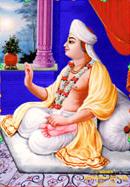
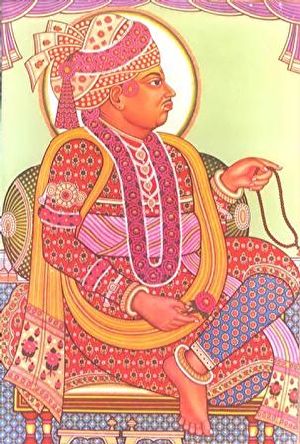
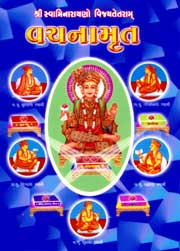
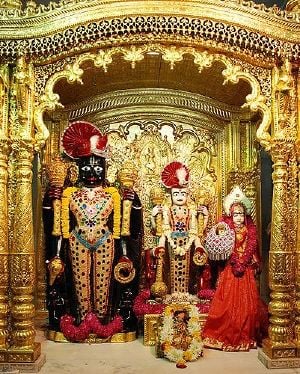

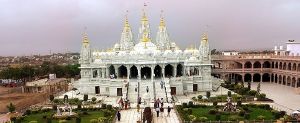
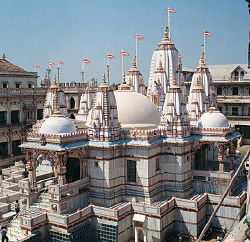
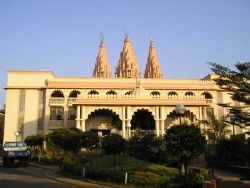
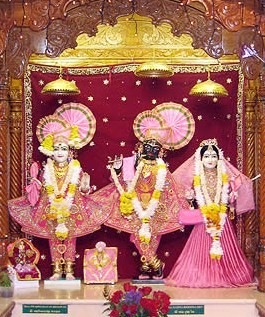

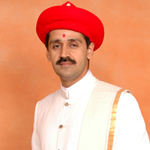
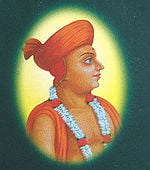
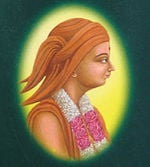
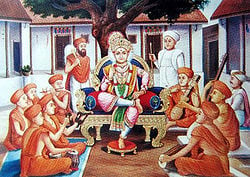
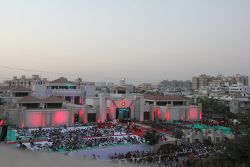
 KSF
KSF